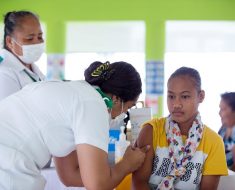
(HealthDay)—A cervical cancer screening strategy that involves cytologic testing every three years from ages 21 to 29 years and then continuing cytologic testing or switching to low-cost high-risk human papillomavirus (hrHPV) testing every five years is reasonable, according to a study published online May 13 in JAMA Internal Medicine.
George F. Sawaya, M.D., from the University of California in San Francisco, and colleagues estimated the cost-effectiveness of 12 cervical cancer screening strategies. The frequency of screening, management of abnormal test results, and age of switch from cytological to hrHPV testing were varied.
The researchers found that the most lifetime quality-adjusted life years (QALYs) were yielded with cytologic testing every three years with repeat cytologic testing for atypical squamous cells of undetermined significance (ASC-US); more QALYs were conferred at higher costs than the lowest-cost strategy (cytologic testing every three years with hrHPV triage of ASC-US). Fewer QALYs were provided at higher costs by all cytologic testing plus hrHPV testing (cotesting) and primary hrHPV strategies. In sensitivity analyses, when hrHPV test sensitivity was markedly higher than cytologic test sensitivity or when hrHPV test cost was equated to the lowest reported cytologic test cost, hrHPV testing every five years with genotyping triage beginning at age 30 years was the lowest-cost strategy.
Source: Read Full Article





